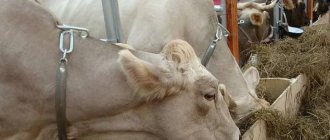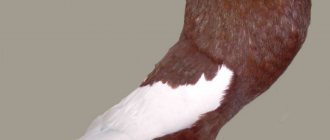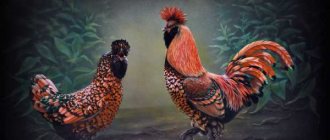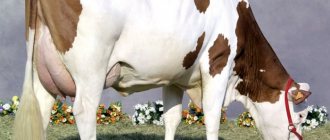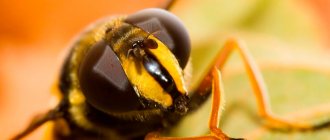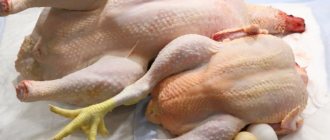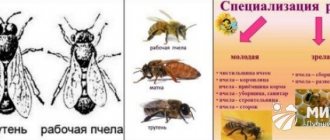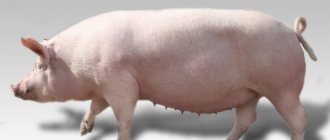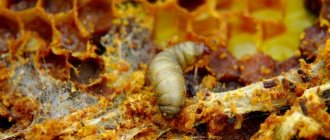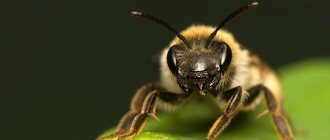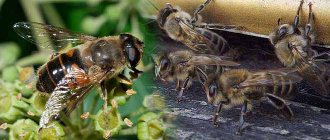Breed characteristics
Their characteristics will help you get acquainted with the main properties of the Karnika bee breed:
- The majority of bees are characterized by a peaceful nature. But there are populations prone to aggression.
- Thanks to the calm behavior of the carnika, the beekeeper can inspect the hives without resorting to the use of a protective net or fumigation. At the same time, the insects remain in their places, not reacting to people at all.
- Representatives of the breed are very hardworking. They work not only in sunny weather, but also with the slightest clearing in rainy and foggy weather. In addition, they always return to the hive with a full bribe and quickly switch to the best options for sources of honey collection.
- They begin collecting nectar already at 10 degrees Celsius and continue work until late autumn.
- Insects overwinter in small families. They begin to develop rapidly when the first spring warmth appears, which allows for early honey collection.
- Insects survive wintering without problems, even if very low temperatures persist for a long time.
- Increased vitality allows you to emerge from wintering with a minimum amount of death.
- They tolerate transportation without problems, during which the temperature in the hive almost does not increase.
- Despite the increased tendency to form swarms, when anti-swarm measures are carried out, they quickly go into working condition and begin collecting nectar.
- Resistant to parasitic diseases. Under particularly unfavorable conditions they can be susceptible to nosematosis.
- They easily navigate the terrain and have excellent coordination, which makes it possible to keep carnikas in pavilions.
- They quickly settle into new housing.
- They do not fly into other people's hives and do not steal honey. At the same time, they perfectly protect their home.
Some characteristic features of carnival bees distinguish them from their relatives:
- They produce very little propolis (one might say that this product is completely absent), since they almost never use it.
- Honey signet has a dry consistency and is white in color. True, this sign can vary.
- The long proboscis makes it possible to obtain nectar even from flowers that are inaccessible to other bees.
- Very economical and careful with food. Immediately after the cessation of honey collection, they begin to use food moderately, which allows them to leave the wintering area with minimal losses.
- They have excellent construction abilities. With the onset of spring, the bee colony begins to build honeycombs and over the course of the season, even with small bribes, they rebuild a significant area.
- Karnika queen bees are distinguished by increased fertility, which is especially valued by beekeepers.
- The breed is prone to quiet replacement of the queen bee. This process occurs unnoticed, without affecting the life of the bee colony.
- With a good honey harvest, they do not stop working on collecting bribes and building honeycombs, even in preparation for swarming.
- They have excellent fixed memory, due to which the behavior of insects does not depend on external conditions.
Care secrets of beekeepers
- Krajina bees produce little propolis, but even small amounts must be removed from the walls of the hive. Bees are resistant to disease, but neglecting hygiene can increase the risk.
- Bees often place nectar in the brood combs, which weakens the colony. To prevent this from happening, the beekeeper needs to either add a frame or install hives with vertical expansion.
- A preventive examination by a veterinarian will help you find out about the disease in advance or even prevent it.
Dear readers, only you will help my channel become better, put your fingers up and don’t forget to share with your close friends.
Sincerely yours, Ildar Maratovich.
Varieties
The Karnika bee breed has several varieties, which are characterized by some distinctive features: character, behavior, productivity, and breeding characteristics.
Pawn
This is the oldest strain of the breed. Insects are able to take bribes from any honey plants and simultaneously work with several types of plants. They are very calm, assiduous and peaceful. Development begins very early and does not stop until October. The peak of development occurs in May.
Bees live in large families, which allows them to effectively use more than 2-3 bribes per season. They are characterized by a very high degree of swarming. But it is easily corrected with special means. If honey is collected in time, swarms will not form.
With purebred breeding, the pawn retains all its inherent properties. Hybrids inherit characteristic characteristics in the first two generations.
Sklenar
Insects have rare perseverance, but are capable of showing aggression. Development is gradual, most effective for collecting nectar from late honey plants. They work great even in September. They create large and medium-sized bee colonies. Swarms form extremely rarely.
Genetic properties are stable only when breeding purebred insects. Already in the first generation of hybrids, a splitting of characteristics is observed.
Troyzek
A distinctive feature is the intensive development of the offspring, which is observed in the spring, but only in the presence of pollen. If there is no pollen, the queen bee may stop scarring. Insects are very clean and hardworking, and are not prone to forming swarms.
The strain is genetically unstable. During hybridization, the original qualities are completely lost.
Hollesburg
Bees are characterized by a special work ethic. Their productivity is significantly higher than that of other subspecies.
Carnika bee: origin
The second name of the breed is the Krajina bee, after the name of the Krajina region, located in Slovenia. Initially, the breed became widespread in Western European countries, especially in Germany and Austria. In the post-Soviet space, the Krajina bee has become common after purchasing prices for bee packages decreased.
This phenomenon occurred as a result of disorderly selection work with bees of this breed, as a result of which some of the original characteristics were lost, the adaptive properties of bees began to change, and several new species were bred.
Important! Several subspecies of the Krajina bee appeared, which were united under one common name karnika.
Appearance
Most bees are bright gray with a silver tint. The hairs are short, the border is thick. But in some individuals the main color is diluted with yellowness, which, according to many beekeepers, is considered completely acceptable. But there is another opinion, according to which purebred insects should only be gray.
The description of the Karnika bee breed notes that the insects are very small - 15-18 millimeters. Worker insects weigh about 100 milligrams, queens weigh 200 milligrams, and drones weigh 230 milligrams. At the same time, bees have a very long proboscis, reaching a length of 6-7 millimeters.
Features of queen bees
Hardworking, patient insects that do not show aggression. This is just a brief description addressed to Karnika bees. All this can be confidently attributed to the queens of this species. But it is worth highlighting the most characteristic differences.
- Exceptional fertility. Two thousand larvae give a good increase in numbers.
- The replacement of the uterus occurs almost unnoticed by the rest of the family.
- The cost of each queen of this species is high. This is due to the fact that one individual lays several queen cells.
- For the development of the larvae, a large amount of pollen is required, which is brought by worker bees. Otherwise, the queen will not lay them.
This guarantees good, healthy offspring.
Important!
When crossed with bees of other breeds, all the positive characteristics of the carnika disappear.
Karnika is valuable not only for its peacefulness, but also for its high productivity. Having such bees, the owner has the opportunity to develop a highly profitable farm.
Advantages and disadvantages
Karnika bees have many positive qualities due to which they are valued by beekeepers:
- peaceful nature, which greatly facilitates the maintenance of the apiary;
- high fertility;
- increased productivity (30% more compared to other breeds);
- constant performance regardless of the type of honey plant and weather conditions;
- easy handling;
- excellent memory;
- undemanding conditions of detention;
- good transportability and quick adaptation to external changes, which makes them ideal inhabitants of mobile apiaries;
- resistance to temperature changes, which facilitates easy wintering;
- economy when using feed;
- low susceptibility to diseases and parasites.
Along with numerous advantages, there are also some disadvantages of the breed, but they are insignificant. The main drawback is the tendency to swarm, but this is easily eliminated.
Thanks to the above advantages, the beekeeper's costs are minimal when maintaining carniki. The cost of purchasing bee packages and maintenance is insignificant compared to the profit.
Content Features
Many beekeepers are interested in the question of whether a bee can winter normally in the harsh Russian winters. Germany, where carnica was bred, has mild winters. This is not entirely true. The main habitats of the carnika are the Alpine mountains bordering the Adriatic Sea. The climate of these places cannot be called mild due to frequent winds, high humidity and harsh winters. Therefore, such climatic conditions will not be detrimental to the life of the carnika.
The Norwegian line of the queen bee gives her the ability to worm even under unfavorable weather conditions when there is not an abundance of pollen. But they enter the winter in small families, so the survival rate is high and food supplies last until new bribes.
When wanting to breed Karnik bees, beekeepers should pay attention to the recommendations of experienced beekeepers.
- When choosing a subspecies of bee, it is better to choose the one that is more suitable for the climatic conditions of keeping.
- To prevent the appearance of aggressive offspring, you should not cross the breed with other species of bees.
- For productivity, you can keep a carnival queen and Italian drones in one hive at the same time. This is an opportunity to get a strong family and an abundance of honey.
- The best honey plants for carnica are rapeseed and clover. If the region does not have an abundance of these plants, then it is better to give preference to other types of bees.
- To prevent swarming, remove frames with brood and install empty ones.
If the conditions listed above are satisfactory, then Karnika is the bee that will bring success to the beekeeper. The breed is actively used in private apiaries and for industrial breeding.
The nuances of planting and replacing the uterus
Old queens are less active, which leads to deterioration in fertility, decreased honey yield, the development of diseases and problems with wintering. Therefore, it is necessary to plant new queen bees. But in order for the new queen to successfully settle in, some factors need to be taken into account.
The optimal time for replanting is spring and early summer. During this period, there are more young insects in the hive than old ones, which makes survival easier. It is also possible to replant at the end of summer and beginning of autumn, when the inhabitants of the hive become calmer.
Before installing a new queen, it is necessary to remove the old queen bee and honeycombs with larvae. The process works best in small hives.
In which regions is it recommended to breed?
Karnika bees are popular among beekeepers in Switzerland, Germany, Slovakia, the Czech Republic, Romania, Austria, and Central Europe. Insects are able to live in regions with hot summers, cold winters and short springs.
On a note ! At first, the breed was distributed only in Europe, but due to its high adaptability to climatic conditions, it is successfully bred in central Russia, Altai, the Urals and Siberia.
Productivity
Krajina bees can produce a large honey yield. In a day, a family is able to collect from 6 to 15 kg of honey, depending on the number of bees in the hive.
Even in poor honey harvests they have the ability not to lose their productivity. This is due to the size of the proboscis and the ability to take nectar with low sugar content. The excellent profitability of the Krajina depends on the fact that they are economical in terms of winter expenses.
The queen's fertility reaches 1400-2000 eggs per year, and this is not small. High survival rate of young animals has a positive effect on farm profits.
Bee disease
The beekeeper very rarely has to deal with various diseases of bees, since they are resistant to them. This is especially true for foulbrood and nosematosis. Insects are energetic and characterized by high vitality; they almost never get sick. In recent years, only calcareous offspring are often found.
Treatment of ascospherosis (calcareous offspring)
A variety of carnika bees can suffer from ascospherosis. This disease is caused by the fungus Ascosphaera apis, which affects larvae of any variety. The fungus itself will not escape from the hive, because it has high viability. This insidious fungus must be eliminated by beekeepers.
You can tell that the larvae are infected with ascospherosis by their appearance: a white limescale coating appears on them. The fungus grows both on the body and from the inside, so the bodies of the larvae will increase in size. If measures are not taken, then in the end the larva will simply turn into a piece of stone, which the bees themselves throw out of the hive.
Infection occurs due to increased moisture at low air temperatures. In second place, the reason may be non-compliance with hygiene standards when caring for the hive. If a beekeeper works with dirty equipment, then the bees can easily become infected with ascospherosis.
If an infection does occur, then it is necessary to take immediate action, throw away the frame with the infected larvae, and treat the hive with Ascocin, Unisan or Nystatin. You can resort to traditional methods by wrapping crushed garlic in gauze and placing it in a hive where all the bees will be temporarily relocated.
Wintering of Krajina bees
Families of Krajina bees prepare in advance for wintering as soon as the main summer season ends. The supply of nectar to the hives stops, and the queen stops laying eggs.
Krajina bees tolerate temperature changes well, or rather its increase. In terms of resistance to cold weather, only Central Russian bees can yield to it. But the Caucasian bee does not tolerate cold weather as well as the Krajina bee.
Until recently, beekeepers considered spasmodic development to be a characteristic feature. Insects overwinter in weak colonies. There are 8 full frames from winter supplies. Today, European stores have begun to offer extensions that allow you to expand hives. Since then, Krajina bees have been bred in full-fledged strong families.
Main subspecies
To date, many subspecies of the breed have been created:
- Pischetz strain. This subspecies is usually called a typical representative of the carnika. Such an individual has early brood. She leaves early for the winter and requires close care. She is very productive and active.
- Krainskaya. This subspecies produces brood very early. Family strength is average. She has problems with weather changes. She is very hardworking and peaceful. If the bee spends an unsuccessful winter, then nosematosis is possible.
- Troyzek strain. Morphological features and behavior are typical of Carnica. Family strength and brood quantity are average. This is a very economical bee that requires minimal food. However, of all the subspecies, it produces the least amount of honey.
- Carpathian subspecies. This is perhaps the most productive subspecies. The strength of the family is high. This bee has excellent construction speed and high productivity.
- Lower Austrian. This subspecies was bred far from its native home, where the bees came from. It is for this reason that the subspecies has many differences from the usual carnika. Individuals begin to raise brood relatively late, but the rate of development of families is very high. They prefer a large nest, the strength of the families is great. With some help from the beekeeper, the colony maintains a high level of brood throughout the summer. It grows quite strongly in winter and develops well in spring. Some researchers consider the Lower Austrian bee to be an intermediate form between the dark northern bee and the carnica.
Disease resistance
Natural resistance to diseases is associated with protective reactions. Its degree varies among different breed species. Conventionally, the mechanisms by which insects resist pathogens are divided into three types:
- behavioral (orderlies unseal affected cells and throw away diseased larvae, increased cleanliness);
- physiological (insects or larvae produce products that inhibit the development of a pathogen or parasite, for example, varroa mites, foulbrood, etc., or the rapid rate of development of larvae);
- anatomical.
Which bee is better? Both breeds demonstrate heritably transmitted behavioral and physiological mechanisms to resist diseases and parasites - the rapid rate of larval development and hygienic “habits”. Thanks to them, the Ukrainian minke whales maintain their health quite successfully. They are little susceptible to honeydew toxicosis, paralysis and ascospherosis.
The mountain conditions in which the rock was created hardened the Carpathians. Therefore, they have fairly good health. They are extremely weakly susceptible to ascospherosis, nosematosis and bacterial diseases. They also have good resistance to varroa.
